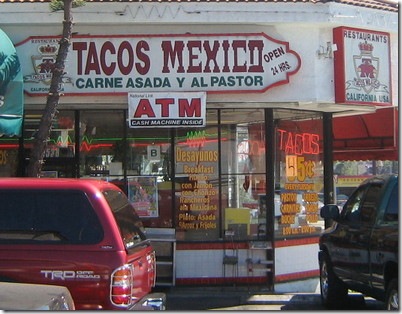This year’s Rail~volution conference -- the annual gathering of livability advocates, urban sustainability coordinators, and transit agency officials – kicked off today with remarks by Chris Leinberger of the Brookings Institution and Manuel Pastor, who teaches demographics and ethnicity at the University of Southern California.

Leinberger noted that Hollywood does more consumer research than anyone else, and it portrays what audiences aspire to. So, we can see in the difference between TV shows of past decades and current shows the evolution of tastes in the U.S. Where we had I Love Lucy, Dick Van Dyke, and The Brady Bunch, all set in the suburbs, we now have Seinfeld, Friends, and Sex in the City – all set in cities.
Indeed, Leinberger often talks about the increased demand for urbanism, especially among young people, but he also noted the downsizing trend as baby boomers move out of big houses to smaller spaces in more walkable, urban neighborhoods. And he credited the trend of people having fewer children with the expansion of the demand for walkable urbanism: Only 25 percent of households have children now, as opposed to 50 percent in the 1950s. Singles and couples without children are the “target market” for walkable urbanism, he said, and that constituency is only growing.
At the same time, Manuel Pastor argued that the main catalysts of walkable urbanism in the future are going to be the people with the highest fertility rate in the nation, having the most children: Latinos. (Latina women have an average of three children each, while each white woman has an average of 2.1.)
Pastor said the age gap between whites and "non-white Hispanics" (Latinos) – the median age among whites is 41; among Latinos it’s 27 – is causing significant tension. The state with the largest age gap between whites and Latinos is Arizona, which notoriously passed (what was then) the country’s most repressive anti-immigrant law last year. The gap is also responsible for low levels of per capita spending on education, since older whites “don’t see themselves” in the younger generation using the schools. And good urban schools are key to keeping families in cities as their children grow up.
Even with their big families and many children, Latinos prefer to live in cities, Pastor said. New arrivals, especially, disproportionately use transit. The walkable urbanism in immigrant neighborhoods is characterized by “taquerías, not cappuccino bars,” Pastor said. Latinos simply don’t follow the same trends as white Americans when it comes to suburban flight when kids come into the picture.
Meanwhile, Leinberger also gave the audience a sneak preview of the results of a Brookings study coming out in December. The findings are more or less what Leinberger has been saying for years: There’s a pent-up demand for walkable urbanism, and that it shows in higher real estate values in those areas. They found that when an area goes up one point on its WalkScore, office rents go up by $9 and retail rents go up by $7 per square foot per year. The premium on urban locations – the extra amount a tenant pays to set up shop in a walkable city – doubled during the recession.
And as an aside: While I believe Leinberger when he says that a renewed real-estate industry commitment to walkable urbanism could be the ticket out of the recession, I probably wasn’t the only person in the audience who cringed a little when he said walkable urbanism was also the solution to the crime problem. More people on the street, he said – not more police officers on the street – lead to greater urban safety. For someone living in a city that was torn apart by the crack epidemic in the eighties, I find that simplistic explanation a little hard to swallow.
However, I was a little more convinced by his follow-up, which was that class and race segregation and ghettoization had a big hand in causing the spike in crime. He highlighted the wealthy Washington neighborhood of Georgetown, which saw the building of elaborate, sprawling mansions on the same street as tiny two-story woodframe rowhouses in the mansions in the 18th and 19th centuries. “That’s how we built cities for 6,000 years,” he said, “and for most of that time they were very safe.”
We have several Streetsblog reporters at Rail~volution over the next three days -- stay tuned for lots more coverage of the events.





